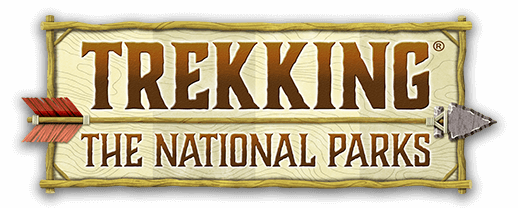Grand Canyon National Park
Located: Arizona - Established: February 26, 1919
The Park: To understand the full meaning of the “Grand Canyon” you cannot just peer over its edge. You must hike down into the canyon to experience what its namesake truly means! If you’re not up to hiking down into the canyon, at least visit the Desert View Watchtower to get a feel for just how “grand” this park is!
Carved by the fury of the Colorado River for the past 5-6 million years, this mile deep gorge covers 1.2 million acres of the Colorado Plateau in northern Arizona. The park is a showcase of geology exposing the many sedimentary layers deposited on the Colorado Plateau over the last 500 million years!
The Grandest of Canyons
Most of the 4+ million people who visit the Grand Canyon each year travel to the park’s South Rim. If you seek to avoid crowds, I suggest you venture to the more remote North Rim where you’ll be treated to evergreen forests, crisp clean air, far fewer people and incredible views of the canyon!
Getting there: The South Rim Entrance is approximately 80 miles from Flagstaff, AZ. (a 5-hour drive from Phoenix, AZ) To access the North Rim, take AZ-67 from Jacob Lake to the park. As the Condor flies, the north and south rim are only 10 miles apart. However, to drive from one rim to the other, you are looking at a 215-mile, five-hour drive!
When to go: The park is open year round. Summer attracts very large crowds...especially to the more easily accessed South Rim. North Rim facilities close each winter and, depending on weather, reopen mid-May.
Terry hiking up the Bright Angel Trail just outside Indian Garden completing our rim-to-rim trek.
What to do: The park offers a wide variety of activities for those who wish to experience the great outdoors. Mule trips and rafting expeditions are popular pursuits. The South Rim Visitor Center and the park’s museums will help you learn more about one of the world’s Seven Wonders.
Whether you visit the North or South Rim, the Grand Canyon offers many outstanding hiking opportunities to experience what Mother Nature has done to the Colorado Plateau over the past 1.8 billion years! Several trails will take you down to the furthest depths of the Canyon; however, before proceeding, heed the warning signs posted on the Rim: “Hiking down is optional. Hiking back up is mandatory!” Hiking down into the Canyon is an arduous event and should not be taken lightly! There are NO easy hikes down into the Canyon and back!
At the bottom of the canyon during our 17th park visit.
Where to stay: There are three campgrounds on the South Rim - Mather Campground located near the Village hosts over 300 campsites. Trailer Village, adjacent to Mather Campground has full RV Hookups. The Desert View Campground at the eastern reaches of the South Rim accommodates 50 campsites but no RV hookups. There are numerous lodging opportunities on the South Rim including the El Tovar - one of the two Great Lodges of the National Parks located at the Grand Canyon.
Grand Canyon Lodge - North Rim
On the North Rim, you’ll find a much quieter environment with a very nice campground and the Grand Canyon Lodge, the other Great Lodge of the National Parks.
Wildlife: One of the rarest birds in the world and the largest bird in North America, the California Condor is making a comeback along the rims of the Grand Canyon. With a 9-foot wingspan, it isn’t uncommon to see one of the 73 “local” Condors soaring above the steep canyon walls.
Trivia: Water used by facilities on the South Rim comes from the 16-mile Trans-Canyon Pipeline, which originates at Roaring Springs on the North Rim.
Banner: Rainbow on the rim during a summer storm.
Experience these Check List:
- Stop by any of the park's several Visitor and Information Centers
- Hike the Rim Trail on the South Rim
- For a reprieve from the crowds, visit the North Rim
- Hike down into the Canyon...cautiously!
- Hike the Widfross Trail on the North Rim.
- Ride a Mule into the Canyon
North Rim Utah Juniper
Desert View Watchtower
Foggy morning on the North Rim
Ribbon Falls









